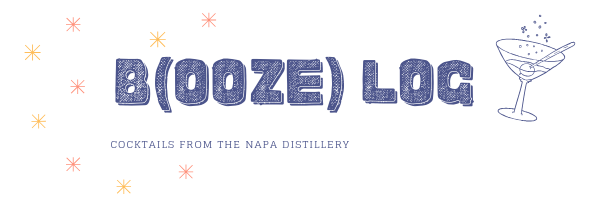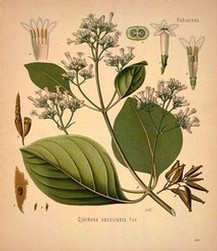Welcome to Our B(ooze) Log

| Spring 2024 | Summer 2024 | Fall 202 | Winter 2024 |
| California Love | |||
| Cordial P.A.S.S.I.O.N. | |||
| Panamaniac | |||
| NapaStak Rye |
|
||
| Olive All'Aceituna |
| Spring 2023 | Summer 2023 | Fall 2023 | Winter 2023 |
| Chai Goes the Lemon | Isla Pear'rito | Rusty Bramble | GingerBee |
| Fashioned of Chai | Kola Tai | Valley Floor | Fireside Tonic |
| Parche'd Apple | Slung Pear | Petite Soufrance | NVD Watsonian |
| Mule'd Apple Cider | Napa Libertad | Winter Pomito |
| Spring 2022 | Summer 2022 | Autumn 2022 | Winter 2022 |
| *W.W.A.D.? | Acadian Buttefly | Spicy Dog | Breakfast Sour |
| *NVD Beautiful Day | Paramour | Fall French 75 | Sgroppino Pie |
| *Geranium Lemon Drop | Peach Mojito | Dirty Grapefruitini | Spicy Toast |
| *Up North Old Fashioned | St Angele | Holiday Leftovers |
| Spring 2021 | Summer 2021 | Autumn 2021 | Winter 2021 |
| * Indian Springs Spritz | * Caribbean Sunset | * Blue Da-Ba-Dee | * Portland Old Fashioned |
| * Carmel by the Sea | * Pineapple Sunrise | * Jennifer Juni-Pear | * Poms'mo |
| * Garden Grove | * Pink Flamingo | * BlueBerry Sangria | * By the Fire |
| * Citrus Heights | * Bird of Paradise | * Rosey Mule | * Pom Beach Tea |
| Spring 2020 | Summer 2020 | Autumn 2020 | Winter 2020 |
| * Yellow Brick Road | * Strawberry Coast | * Goldfinger | *Winter Wonderland |
| * Ruby Shoes | * Pirates Booty | * The Oscar Goes to... | *Sugar n' Spice |
| * There's No Place like Home | * Walk the Plank | * The Manhattan Experiment | *Naughty & Nice |
| * Behind the Curtain | * Davy Jones Locker | * Key Largo | *Mint Condition |
Temperance Tuesday: As Bittersweet Cocktail Example
Dear Readers,
In my last post I promised a nonalcoholic cocktail recipe based on the format I laid out in the crash course. If nothing else, I try to be a man of my word, so here it is! Please refer to my post last week for more information about how I came to this recipe!
Something I forgot to note last week: When you have created a signature concoction, make sure to name it something fun!
South of Wherever
2oz Small Hands or Liber Pineapple Gum Syrup
1oz fresh orange juice
1oz fresh lime juice
2 dashes Mr. Bitters Honeyed Apricot & Smoked Hickory Bitters
12oz soda water
Shake first four ingredients with ice in a cocktail shaker. Pour unstrained into a pint glass. Top with soda. Garnish with lime wheel. Makes one 16oz bittersweet cocktail.
As you can see this drink follows the format. It has the pineapple gum as the sweet component, fresh citrus for the sour, bitters that complement the other flavors in the drink, and soda water to dilute.
Hope this helps in your home mixing adventures!
Until next time,
your ever humble, honest mixologist,
Aaron Lahey
Tardy Temperance Tuesday: Bittersweet Cocktails at Home (A Crash Course)
Dear Readers,
Over the past few months I have written about several of the non-alcoholic Bittersweet Cocktails that we serve in our Oxbow Tasting Salon and Bar Shop. Today, I am going to show you how to start creating your own Bittersweet Cocktails at home. Everything here is a rule of thumb, and there will almost certainly be exceptions to the rules. The important thing to remember is to have fun and to experiment!
The Framework
Every Bittersweet Cocktail has a basic framework to it, certain components that will always be there. These components are sweet, sour, bitter, and water.
Sweet
Every drink is going to have a sweet element. If at all possible avoid using refined sugar in your drinks. Examples of sweet components include demerara sugar, infused syrups, fresh muddled fruit, molasses, maple syrup, brown sugar or agave.
Sour
A sour flavor balances sweetness and is what makes a drink taste refreshing. The sour flavor is produced by one of several types of acids commonly found in food. Citric acid being the most common, as well as acetic acid (vinegars), tartaric acid (grapes), or malic acid (berries). Citrus juice is the most common sour component in cocktails, but various vinegars, and tart fruit juices also fill this role.
*note* Shrubs, also known as drinking vinegars, and tonic syrups, as well as sweetened lime juice, lime cordials, and sweet and sour mix fall into both the sweet and sour categories. With some being on the sweeter side (cordials, sweetened lime) and others on the more sour side (drinking vinegars, tonic syrups) with some being balanced in themselves. Experiment with these ingredients until you get it balanced the way you want.
Bitter
In non-alcoholic cocktails, bitters add a complexity that makes them as satisfying as a "real drink" as well as tempering the sugar. Bitters tend to play more of a forward role in the flavor profile of non-alcoholic drinks, and can even be the featured flavor in the drink. Feel free to use two or even three different bitters in one drink.
Water
Whether it’s sparkling, still, or flavored, you are going to need to dilute your drink to make it light and palatable.
Proper Proportions
Proportions are important in drink making, and will require some experimentation and practice to perfect, but here are some rules of thumb that have served me well:
In total you want between a 1:3 to 1:4 ratio of flavorings to water. So your sweet, sour, and bitter components should never equal more than 33% of the total volume of your drink.
In general, sweet and sour components should be in a 1:1 mix to stay balanced. If you want a tart drink like a lemonade however, do a 2:1 mix of sour to sweet. Certain sweet and sour ingredients will also be more concentrated than others. Here is where experimentation comes in.
Check back next week for a simple Bittersweet Cocktail I developed based on these rules and framework.
Until then, Happy Mixing!
Your ever humble, sober mixologist,
Aaron Lahey
Temperance Tuesday: Spring Tonic
Hello all and welcome to this week's Temperance Tuesday! Today I will be highlighting another of our bittersweet cocktails, the Spring Tonic. This drink has been extremely well received in the shop. With bright, floral flavors and a touch of tropical pineapple gum, this is a drink that truly hearkens the coming of spring.
Spring Tonic
Makes one 16 oz drink
2.5 oz Jack Rudy Cocktail Co. Elderflower Tonic Syrup
1.5 oz Liber & Co. Pineapple Gum Syrup
2 dashes (12-16 drops) Fee Brothers Orange Flower Water
4 drops (NOT DASHES!!!) Scrappy's Lavender Bitters*
Fill pint glass with ice. Add tonic and gum syrup. Fill with soda water. Top with orange flower water and lavender bitters. Garnish with lavender sprig.
*Note: In this drink, be very conservative with the lavender bitters. Any more than four drops and the lavender takes over, causing you to lose the subtle interplay of the different floral components.
Want to take this Temperance Tonic in a post-Prohibition direction? Try adding 2 shots of our NVD Old Hollywood Ginn.
One of the main components in this cocktail is a tonic syrup. I want to take a moment to talk about quinine and different forms of tonic. Quinine, the main ingredient in tonic, is an alkaloid found naturally in the bark of the Cinchona tree. The Quechua, a tribe indigenous to Peru, originally steeped the bark in sweetened water to aid with muscle relaxation. Europeans incorporated quinine into their medical practices, using it to effectively treat malaria since the 17th century. Even today, quinine is used as a home remedy for muscle spasms and cramps. As time progressed, we have been able to extract quinine to higher levels of purity, and this pure quinine powder is what is now added to most commercial tonic water.
The most common form of tonic on the market today is tonic water. For my personal preferences, most tonic water is far too bitter, with an almost chemical aftertaste. This is due to the fact, as I mentioned earlier, pure quinine powder is being added to it, as opposed to an extraction of Cinchona bark. In my cocktails, I much prefer using tonic syrup.
Tonic syrup is actually quite a bit more similar to the original Peruvian preparation of tonic. Cinchona bark is steeped with flavorful herbs and spices, and sweetened with sugar or agave to balance out the sharp bite of quinine. Warm reddish brown in color, tonic syrup adds a rich complexity to any number of drinks, from tiki drinks to gin fizzes (not to mention adding new life to a stale gin & tonic).
Now a brief note about the other ingredients, Liber & Co. Pineapple Gum Syrup is an awesome ingredient. The pineapple note it lends is subtle, giving it much more versatility than one would originally think. Far from being confined to tropical rum and tiki drinks, I use this syrup just as often in a light gin cocktail or a dark whisky one. It has a brightness and balance to it often lacking in simple syrups. The addition of gum Arabic makes it even more versatile in vintage cocktails or egg white drinks.
Fee Brothers Orange Flower Water lends a light, sweet floral flavor, but must be used in moderation. This is another ingredient that can easily overwhelm a cocktail. Most well known as a key ingredient in the ubiquitous cocktail, The Ramos Gin Fizz.
Scrappy's Lavender Bitters are made with true herb maceration (the right way to make bitters) in Seattle, Washington. This is my personal favorite brand of lavender bitters on the market, as I think it gives the best, well rounded, lavender flavor. The closest to the fresh herb I should say. That being said, as I mentioned earlier, these bitters are very potent, and might need to be used in conjunction with another bitters in some cocktails as not to overwhelm with lavender.
Well, that's all for this week folks. Until next time,
Your ever humble, bitter bartender,
Aaron Lahey
Temperance Tuesday: Year of the Ram
Good afternoon and welcome to another Temperance Tuesday!
I've got a brand new drink to share with you today, in honor of the Chinese New Year! It is the year of the ram (or sheep or goat), which just so happens to be my sign in the Chinese Zodiac. This drink plays off of flavors traditionally seen in Chinese cooking. Ginger, star anise, and Chinese celery. Added to this is Mr. Lee's Ancient Chinese Secret Bitters, with notes of ginger, ginseng, and sichuan peppercorn. The result is a refreshing herbal tonic, with the complexity and character of a traditional Chinese apothecary. This drink also has a green, almost grassy quality; sure to please any rams you know.
 YEAR OF THE RAM
YEAR OF THE RAM
3 oz Pok Pok Som Chinese Celery Drinking Vinegar
1 oz Morris Kitchen Ginger Syrup
1 dash (6-8 drops) Addition Star Anise Cocktail Spice
2 dashes (12-16 drops) Mr. Lee’s Ancient Chinese Secret Bitters
Soda water
Fill a pint glass with ice, and add the Chinese Celery Drinking Vinegar and Ginger Syrup. Fill with soda water. Top with Star Anise Cocktail Spice & Ancient Chinese Secret Bitters. Makes one 16 ounce drink.
Now a bit about the ingredients:
Pok Pok is a James Beard award winning Thai restaurant in Portland, OR, that has produced a line of what they call Pok Pok Som: drinking vinegar. Pok Pok Som is like a shrub, but with a much higher proportion of vinegar to sugar. Therefore, in a cocktail, it acts more as a souring agent and less as a sweetener. We carry four fairly exotic flavors of Pok Pok Som here in the bar shop: tamarind, turmeric, Thai basil, and Chinese celery.
Morris Kitchen produces high quality cocktail syrups out of Brooklyn, NY. Their ginger syrup is spicy and sweet, like liquefied fresh ginger.
Addition was founded in the hope of making savory, spicy, and traditionally culinary flavors accessible to the bartender. Based out of Seattle, Washington, their extensive line of tinctures ranges in flavor from jalapeno, to cumin, to rosemary. Unlike a bitters, these tinctures contain no bittering agent. So they provide nothing but the clean flavor of what's on the bottle. This also makes them very useful in cooking, as they truly are liquid spices.
Mr. Lee's Ancient Chinese Secret bitters are produced by Dashfire, a tiny craft bitters company out of St. Paul, Minnesota. Their founder, Lee Egbert, spent a year and a half living in China, and traveling extensively throughout Southeast Asia. These bitters are inspired by his experiences in the east, and the rich flavors seen in their culinary traditions.
Well that's all for this week! Until next time...
Your ever humble, sheepish mixologist,
Aaron Lahey